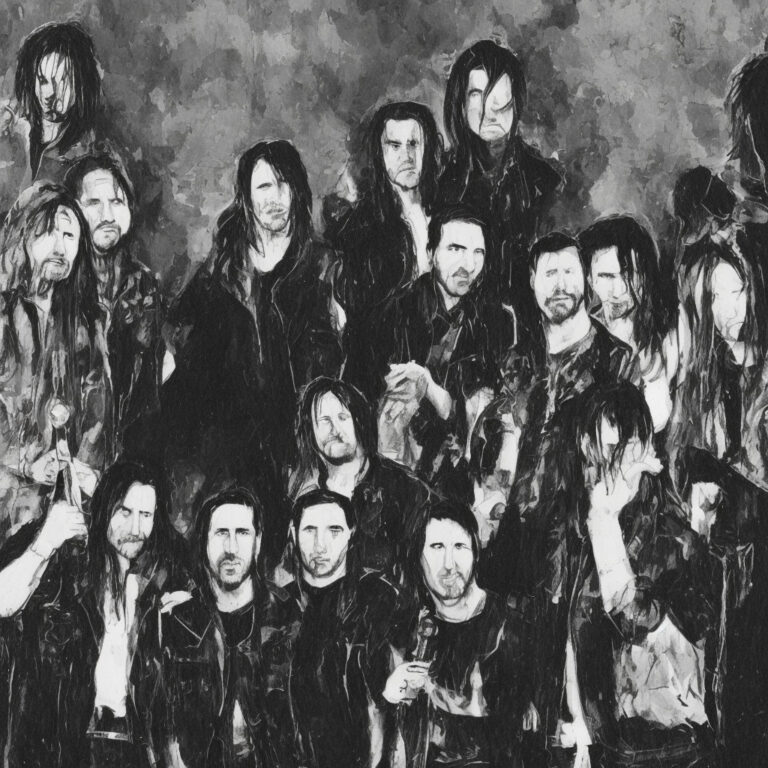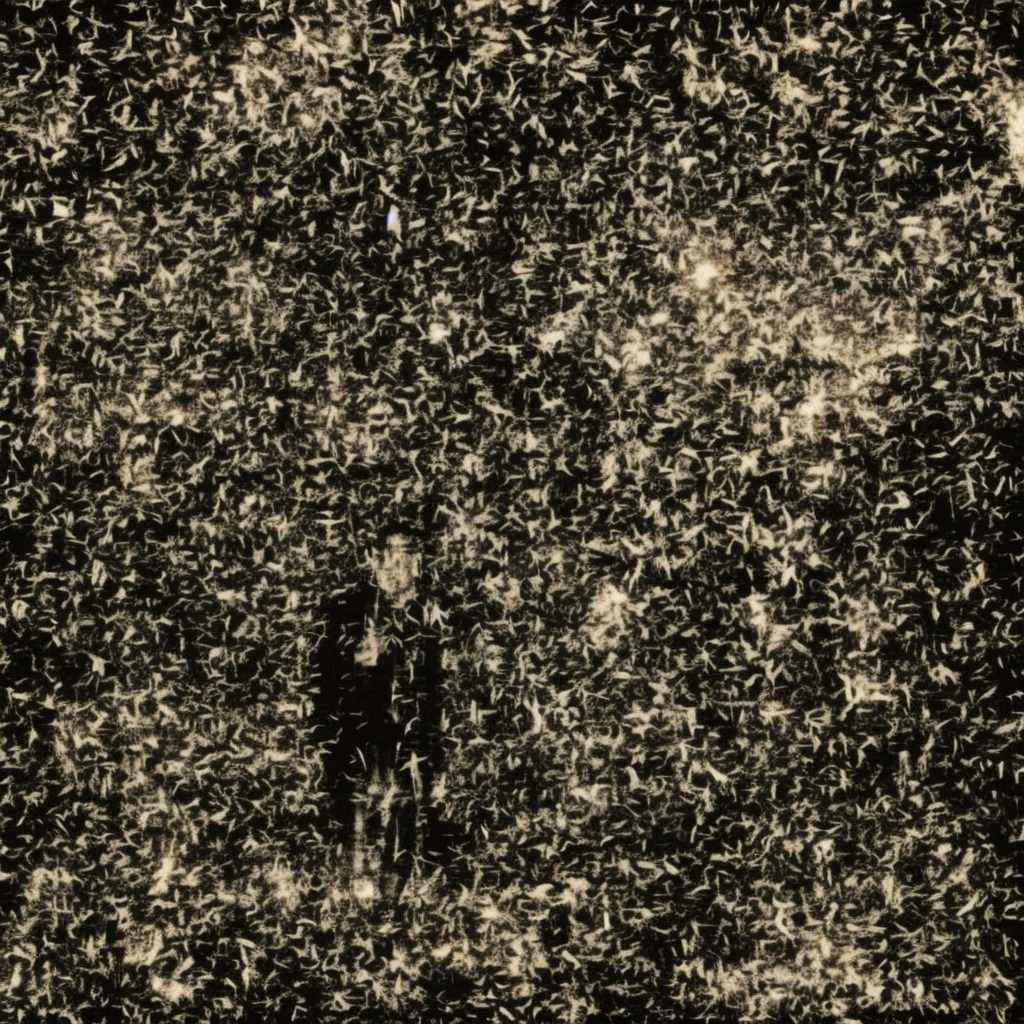? Did you know? “Head Like a Hole” was the first major single by #NineInchNails and Trent Reznor recorded it in a studio above a funeral home! ?? Timeless banger! #FunFact #NIN #AlternativeRock #MusicTrivia Read about it: tinyurl.com/y93xtjbh
Exploring the Origins of a Modern Classic
“Three decades strong, Nine Inch Nails revolutionized alternative rock with iconic hits like ‘Head Like a Hole,’ while mastermind Trent Reznor’s relentless innovation continues to leave an indelible mark on the music world.”

Emerging from the underground with an explosive impact on alternative and industrial rock, Nine Inch Nails, commonly abbreviated as NIN, is a project that has continued to evolve and shape the music landscape over its three-decade-long career. At its core stands Trent Reznor, the mastermind responsible for composing, producing, and performing the bulk of the material, as well as an ever-changing roster of talented musicians collaborating along the way.
In 1989, NIN released its debut album, Pretty Hate Machine, which included one of its most iconic songs, “Head Like a Hole.” The track was an instant hit, establishing the band’s distinctive blend of aggressive rock instrumentation, electronic beats, and introspective lyrics. The song’s raw energy and uncompromising sound quickly captured the attention of both fans and critics alike, pushing Nine Inch Nails to the forefront of the alternative music scene.
“Head Like a Hole” delves into themes of power, control, and the corruption that often comes with it. Reznor’s haunting vocals weave through a relentless, industrial soundscape, leaving a lasting impression on the listener. As the penultimate track on an already impressive debut album, “Head Like a Hole” cemented Nine Inch Nails’ status as a force to be reckoned with in the music industry.
Throughout the years, the band’s lineup has seen multiple changes, but Trent Reznor has always remained the constant driving force. Past and current members include Richard Patrick (Filter), Robin Finck (Guns N’ Roses), Chris Vrenna, and Atticus Ross, who became an official member in 2016 after working with Reznor on various film scores and NIN releases.
Nine Inch Nails has received numerous accolades for its work, including two Grammy Awards for Best Metal Performance (“Wish” and “Happiness in Slavery”) and a nomination for the Rock and Roll Hall of Fame in 2014. Additionally, Reznor and Ross won an Academy Award for their work on the score for The Social Network in 2010, further showcasing the range and talent present within the NIN universe.
Despite their success, Nine Inch Nails is not without criticism. Some detractors argue that their sound can be repetitive or overly reliant on shock value. However, it’s hard to deny the influence and staying power of a band that has managed to remain relevant for more than 30 years. With “Head Like a Hole” as a prime example of their early genius, Nine Inch Nails has continued to push the boundaries of music, leaving an indelible mark on countless fans and fellow musicians alike.
Charting the Course: The Numbers Behind the Jam
“Head Like a Hole: Nine Inch Nails’ slow-burning chart climber that ignited a legendary career in alternative rock.”

Digging into the hard data behind Nine Inch Nails’ “Head Like a Hole,” we first look at its release date. The song was released as a single on March 22, 1990, making it one of the earliest tracks from the band’s debut album, “Pretty Hate Machine.” It’s a song that definitely helped define the band’s sound and direction, and it’s interesting to see how it fared on the charts.
Though many fans regard “Head Like a Hole” as a classic track in Nine Inch Nails’ discography, it’s worth noting that the song didn’t initially make a huge impact on the charts. Upon its release, it debuted on the Billboard Modern Rock Tracks chart at position #39. However, the song gradually gained momentum and climbed its way up the charts over time.
In terms of peak chart position, “Head Like a Hole” reached its highest point on the Billboard Modern Rock Tracks chart at #28. While not a staggering success in terms of chart positions, it was undoubtedly a stepping stone for the band, leading them to future successes both on the charts and in the hearts of fans worldwide.
As far as chart trivia goes, “Head Like a Hole” has the distinction of being one of Nine Inch Nails’ first songs to receive significant airplay, ultimately helping to mold their image and sound. Additionally, it served as a catalyst for the band’s future hit singles, such as “Closer” and “Hurt,” which not only enjoyed chart success but also solidified Nine Inch Nails’ status as a major force in the world of alternative and industrial rock.
In conclusion, while “Head Like a Hole” may not have initially set the charts on fire, it played a crucial role in establishing Nine Inch Nails as a band to watch. Its steady climb on the charts and its lasting impact on the band’s legacy are testaments to the song’s importance in the grand scheme of Nine Inch Nails’ illustrious career.
Unraveling the Lyrics of an Era-defining Anthem
God money, I’ll do anything for you.
God money, just tell me what you want me to.
God money, nail me up against the wall.
God money, don’t want everything, he wants it all.
Bow down before the one you serve.
You’re going to get what you deserve.
Head like a hole, black as your soul.
I’d rather die than give you control.
Head like a hole, black as your soul.
I’d rather die than give you control.
Bow down before the one you serve.
You’re going to get what you deserve.
Taking a closer look at the lyrics of “Head Like a Hole,” the debut single by industrial rock trailblazers Nine Inch Nails, it’s apparent that the song’s themes are a perfect encapsulation of the spirit of the late 1980s and the turning of the decade into the 1990s. Released in 1989, the song is a fierce critique of consumerism, greed, and the corrupting influence of money.
The lyrics invoke powerful imagery, such as “God money, nail me up against the wall.” This line alludes to the idea of money as a god-like entity, with the power to both create and destroy. It also blatantly questions the loyalty of those who worship material wealth, exposing the sacrifices they are willing to make in order to achieve it.
As the chorus repeats “Head like a hole, black as your soul. I’d rather die than give you control,” it becomes clear that the song is an anthem of resistance against the conformity and soullessness represented by the pursuit of wealth and power. The repetition of “Bow down before the one you serve. You’re going to get what you deserve,” drives home the message that blind obedience to a corrupt system may eventually lead to one’s own demise.
This message particularly resonated during the era in which it was written, as the song was released during a time of political and social upheaval. The late 80s and early 90s saw the fall of the Berlin Wall, the economic recession, and the rapid acceleration of globalization. The lyrics of “Head Like a Hole” aptly illustrate the disillusionment experienced by many during this time, as they witnessed the effects of consumerism and greed on society, and the widening gap between the rich and the poor.
In conclusion, this era-defining anthem by Nine Inch Nails is not only a powerful critique of the corrupting influence of money and power but also a call to resist conformity and maintain individuality in the face of a soulless system. The lyrics of “Head Like a Hole” perfectly encapsulate the spirit and events of the time it was written, making it a truly timeless piece of music.
A Visual Trip Into The Industrial Abyss: The “Head Like a Hole” Music Video
Diving into the Industrial Abyss: “Head Like a Hole” music video – a visually iconic, gritty masterpiece that defined 90s industrial rock and propelled Nine Inch Nails into the spotlight.
The music video for Nine Inch Nails’ “Head Like a Hole” is as iconic and memorable as the song itself. Directed by Eric Zimmerman and Benjamin Stokes, this video helped define the visual identity of the industrial rock scene in the 1990s. Zimmerman, a renowned music video director, has also worked with bands like Soundgarden, Ministry, and Megadeth. His collaboration with Stokes on this video made for a unique and groundbreaking artistic vision that captured the raw energy and dark themes of the song.
The “Head Like a Hole” music video was produced on a modest budget, but it doesn’t compromise on creativity and production value. It features a series of dark and gritty imagery, with Trent Reznor, the mastermind behind Nine Inch Nails, performing the song in a dimly lit underground setting. This visual aesthetic mirrors the industrial, aggressive sound of the band’s music and communicates a sense of chaos and unrest.
One of the most notable aspects of the music video is the striking use of black and white footage, which was a stylistic choice that added to the overall mood of the piece. The video also features rapid editing and jarring camera movements, creating a sense of disorientation and intensity to match the song’s relentless beat and driving guitars.
The music video for “Head Like a Hole” became a staple on MTV during its release and played a significant role in the early success of both the song and the band. It introduced Nine Inch Nails to a broader audience and ultimately helped shape the visual language of alternative and industrial music throughout the 1990s.
Apart from the official music video, the song has inspired various fan-made videos and tributes available on platforms like YouTube. Some of these fan creations include animated videos, live performance compilations, and even dance routines set to the song. With its lasting impact on both music and visual culture, “Head Like a Hole” remains an influential and powerful piece of work, and its music video is a testament to the creative force that is Nine Inch Nails.
The Mastermind Behind “Head Like a Hole”
Trent Reznor, the creative force behind Nine Inch Nails, is the composer of their iconic song “Head Like a Hole.” As the band’s frontman and primary songwriter, Reznor has been responsible for numerous groundbreaking and influential tracks throughout his career. Beyond “Head Like a Hole,” some of his most notable compositions include “Closer,” “Hurt,” “The Hand That Feeds,” and “Only,” to name just a few. Known for his evocative and intensely personal lyrics, Reznor has consistently pushed the envelope, both sonically and thematically, and has been rewarded with critical acclaim and commercial success. His innovative approach to music has earned him a spot among the greats, and his contributions to the world of alternative and industrial rock have left an indelible mark on the genre.
A Legacy of Accolades, Appearances, and Covers
“Head Like a Hole”: An industrial rock anthem transcending time, inspiring generations, and amassing accolades, media appearances, and diverse covers since 1989.

“Head Like a Hole” has been lauded for its influence on the industrial rock genre since its release in 1989. The song’s success and impact led to its inclusion in the Rock Band video game series, as well as several films and television series. In fact, it can be heard in the background of the 1994 film “Natural Born Killers” and the popular 2006 video game “Grand Theft Auto: Vice City Stories.” Furthermore, its appearance in the promotional trailer for the 2018 film “The Predator” garnered even more exposure for this iconic track.
Over the years, the song has been covered by multiple artists, showcasing its enduring popularity and influence. In 2006, Canadian electronic musician Venetian Snares reinterpreted the track in his signature breakcore style, adding a new layer of chaos and complexity to the song. Another notable cover came in 2011, when the New Zealand band Shihad paid homage to the Nine Inch Nails classic by performing it live during their performances. More recently, in 2019, Miley Cyrus offered a unique and unexpected rendition of the song, titled “On a Roll,” for the Netflix series “Black Mirror.” This version revamped the lyrics and sound, blending pop and industrial elements to create a catchy, dystopian version that won critical acclaim.
Despite not winning any awards directly tied to the song itself, the impact and longevity of “Head Like a Hole” have contributed to several accolades for Nine Inch Nails as a whole. The band was nominated for various awards throughout the 1990s, and in 2020, they were inducted into the Rock and Roll Hall of Fame. The band’s frontman, Trent Reznor, has also carved out an impressive career as a film composer, winning an Academy Award for his work on the score of “The Social Network” in 2010.
In conclusion, “Head Like a Hole” has stood the test of time as a defining song within the industrial rock genre. Its legacy continues to grow with each new generation of fans and artists who find inspiration in its groundbreaking sound and powerful message. With numerous accolades, appearances in various forms of media, and cover versions spanning over three decades, this iconic track solidifies Nine Inch Nails’ position as influential pioneers within the music industry.
Dissecting the Sonic Landscape
Diving into the musical structure of “Head Like a Hole,” we can see that this industrial rock masterpiece was written in the key of E minor. The song starts off with an infectious drum beat that sets the stage for the pulsating synths and aggressive guitars that follow. The tempo of the track clocks in at a brisk 114 beats per minute (BPM), which contributes to its danceable, yet intense, vibe.
The main chord progression in the verses follows a pattern of Em – G – A – C, while the chorus shifts to a more straightforward pattern of Em – G – A. This shift in chord structure adds a touch of complexity to the song, making it more engaging for the listener. The verse’s chord pattern also creates a sense of tension and release, which is further amplified by Trent Reznor’s powerful vocal delivery.
One of the standout aspects of “Head Like a Hole” is the layering of different synth sounds and textures. Many of these sounds were meticulously crafted using analog synthesizers, which gives the track its characteristic gritty and warm feel. These layers of synths are expertly intertwined with the distorted guitars, creating a wall of sound that is at once chaotic and controlled.
Another noteworthy element of the song is the use of unconventional percussion sounds. In addition to the punchy drum machine beats, the track features samples of metallic clangs, industrial machinery, and other found sounds. These elements further contribute to the song’s industrial aesthetic and reinforce the themes of dehumanization and control found in the lyrics.
The bridge of “Head Like a Hole” offers a brief respite from the relentless energy of the rest of the song, as it strips back the instrumentation to focus on a pulsating bassline and Reznor’s haunting vocals. This moment of calm doesn’t last long, however, as the song quickly builds back up to its explosive chorus, ensuring that the listener remains fully engaged from start to finish.
Overall, “Head Like a Hole” is a meticulously crafted piece of industrial rock that showcases Nine Inch Nails’ ability to seamlessly blend aggressive guitars, intricate synth work, and unconventional percussion to create a sonic landscape that is both powerful and captivating.







